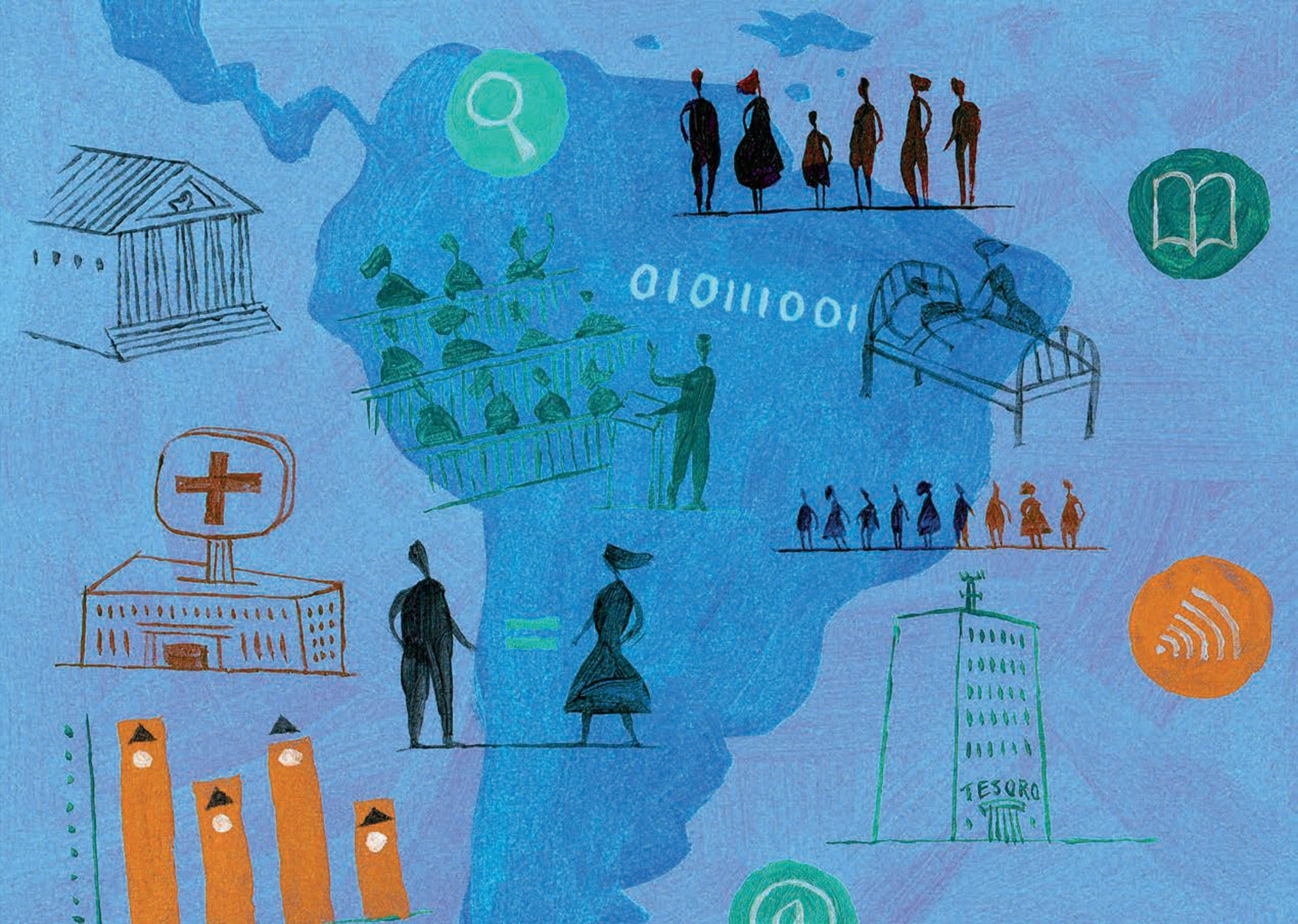The capacity to tax citizens is one of the foundational and fundamental attributes of governments. Revenues collected from taxes represent the most important source of public funds in almost all countries and are crucial to provide public goods and services, guarantee government operations, undertake public investment and embark on a higher or lower degree of income redistribution. As a general trend, in 2017 tax revenues as a share of GDP were on average 22% of GDP in LAC. This represents an increase of 1.8 p.p. since 2007, yet is still significantly below the OECD average of 34.1% in 2017. However, the increase in OECD countries for the same period was smaller than in LAC (0.5 p.p. on average), indicating that the gap between both groups of countries is slowly decreasing.
LAC countries where tax revenues as a share of GDP are highest are Brazil (32.3%), Barbados (31.8%) and Uruguay (30.8%) and Argentina (30.3%). At the other end of the spectrum, tax revenues as a share of GDP are the smallest in the Dominican Republic (13.8%), Paraguay (13.8%) and Guatemala (12.4%). The highest increases in tax revenues between 2007 and 2017 occurred in Ecuador (6.7 p.p.) and Uruguay (5.8 p.p.) permeated by the 2017 recovery in the overall economic environment in the region after a two-year recession.
Still, in Ecuador, this is the result of several reforms over the past decade leading to higher rates in several taxes (i.e. income, inheritances) as well as the modernization of the tax administration. In the case of Uruguay, in 2007 the government introduced a tax reform under the motto “those who have more shall pay more” that among others simplified the tax system and shifted from a universal to a progressive scheme for taxing wages while at the same time establishing the requirement of filling out personal income tax declaration. The reform, associated with the economic cycle, has resulted in an overall increase of tax revenues. On the other hand, tax revenues decreased the most in Peru (3 p.p.) between 2007 and 2017, largely explained by the sharp decrease in the price of minerals and corresponding fall in tax revenues since 2014.
The tax mix in LAC and OECD countries in 2017 was structurally different. In LAC countries, taxes on good and services (e.g. VAT), which tend to be regressive, represent about 50% of tax revenues compared to about one third in OECD countries. For the same year, on average in LAC countries, 44.3% of tax revenues came from taxes on income and profits and social security contributions, compared with 59.8% in OECD countries. In turn, within taxes on income and profits, the revenue share of corporate income tax was higher and taxes on persons were comparatively lower in LAC compared to the OECD (OECD 2019)
Between 2007 and 2017, on average, the most important change within the structure of tax revenues was the increase in the relative importance of social contributions (from 14.4% to 17%). Some countries such as Uruguay (reduction of 18 p.p. in the relative importance of taxes on goods and services) and Costa Rica (10.5 p.p.) have been successful in achieving a more balanced distribution between indirect (e.g. VAT) and direct taxes (e.g. income). However, on average, this reduction has been rather modest (1 p.p.) and the relative importance of indirect taxes has actually increased in nine LAC countries (Bahamas, Barbados, Belize, Chile, Guyana, Jamaica, Mexico, Peru and Trinidad and Tobago).


